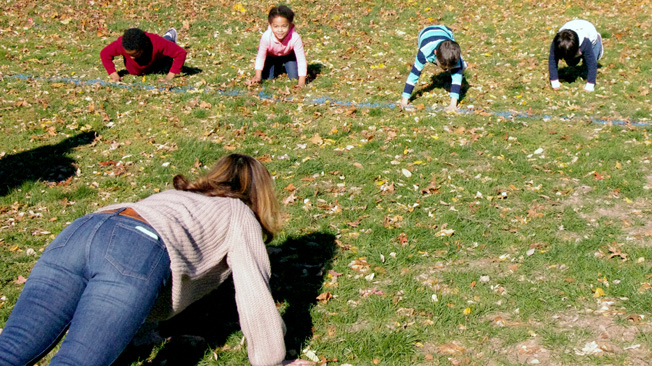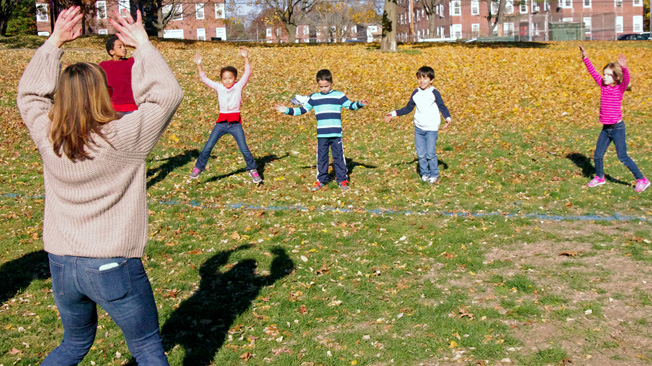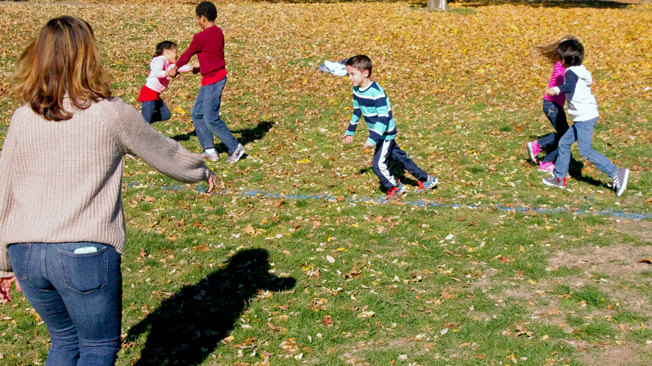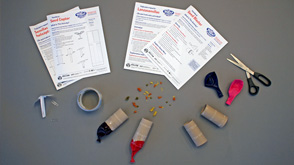Seed Toys
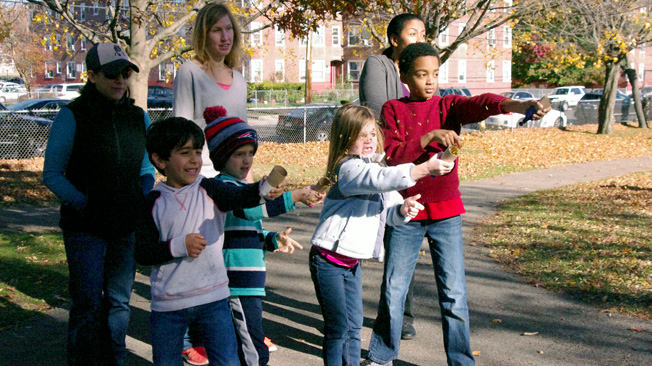
What Is This Activity?
Plants can’t travel, so how do they spread their seeds? Families will make and test toys that model two amazing ways: Seed pods that explode and those that float and twirl like a helicopter!
Introduction
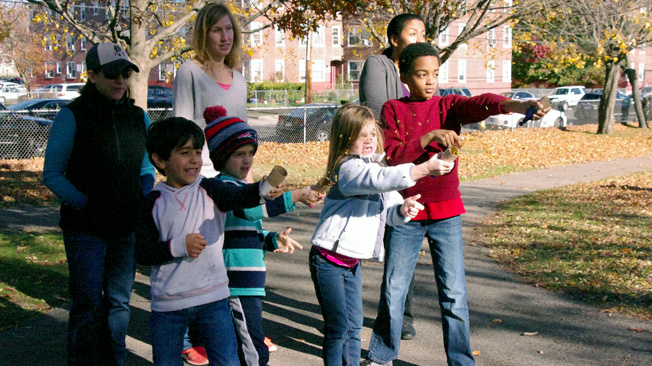
Learning Goals
Big Science Idea:
- Plants can’t move on their own. They depend on wind, water, animals, and explosive force to take their seeds to new places where they can sprout and grow.
Skills kids will use to investigate it:
Communicate information about the plant life cycle
Model and test how seed pods spread their seeds (exploding, floating in the air); communicate why they do so
Measure distances seeds need to travel to find soil
Discuss a problem: Cities and towns with a lot of pavement provide fewer places for seeds to sprout and grow
How Do You Get Ready?
Read the activity and gather the materials.
Scout out a green space, such as a city or town park or your program yard, with a least a few trees or other plants.
Troubleshoot any safety concerns (traffic, poison ivy, sharp objects, etc.).
Make one copy for each family member of the "Seed Blaster" and two copies of the "Seed Copter" handouts (one to use during activity, the other for families to take home).
Make a Seed Blaster and a Seed Copter to use for demonstration (see handouts).
If you don’t plan to show the "Plant Your Socks" video that is paired with this activity on the website, watch it ahead of time and jot down concepts to share with families during the activity.
Warm-up 5-10 minutes
(Science Skills: Communicate information about the plant life cycle)
Bossy Gardener Game. The families are your "Plants" and must obey your commands. Demonstrate each command and ask families to copy your actions:
Plant the Seed: Drop to the ground and do a push-up.
Sprout the Seed: Jump as high as you can, hands in the air. (Explain the verb sprout: When a seed begins to grow into a young plant.)
Make a Flower: Do a jumping jack.
Make New Seeds: Find a partner, hold both hands, and spin around together.
Shout the first three commands in random order. At each command, if anyone does the wrong action or doesn’t do anything, everyone "Makes New Seeds"!
The goal is to say 10 commands in a row without anyone making a mistake. (Note: You may or may not reach this goal!)
Activity 30–40 minutes
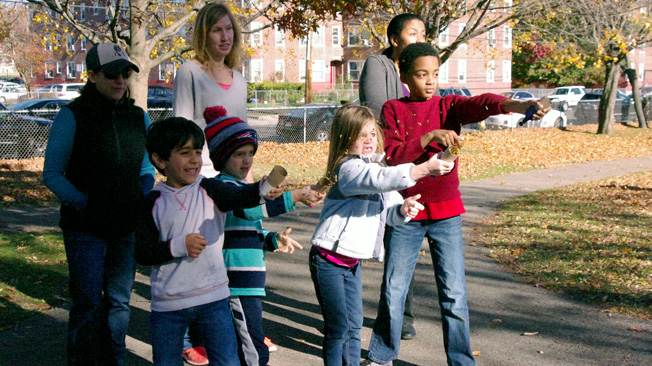
Seed Blaster
(20–25 minutes)
(Science Skills: Model and test how seed pods explode to spread their seeds)
Ask families if anyone has heard of these plants: Pansies, geraniums, California poppies, touch-me-nots (impatiens), violets, lilacs, lupines, peas, okra, squirting cucumbers, or firecracker plants. What might they have in common? (The names of the last two provide a hint.)
Explain that these plants all have seed pods that explode! Point out that some seeds are covered—meaning they grow inside a case, called a pod, or inside a fruit. If you have a pea pod or other seed pod, open it and pass it around.
Wonder aloud: How do seed pods explode? Why do they explode? Let those questions hang as you demonstrate a Seed Blaster.
Ask: What does the "balloon" do? Explain that the walls of the pod tighten as they dry up, building up tension. A hot day or a touch makes the pods spring open—with force! The balloon causes the "seeds" to explode out.
Have families act out exploding like a seed pod.
Pass out on the "Seed Blaster" handout and review directions with families.
Pass out the materials: Balloons, tubes, scissors, tape, and seeds.
Ask adults and older siblings to make their own Seed Blasters and to help younger children make theirs, using the instructions on the handout. Walk around the groups to ask and answer questions and encourage families. Anyone curious about what makes seed pods explode? The walls of the seed pods tighten as they dry up, building up tension. A hot day or a touch makes the pods spring open—with force!
Hold a Seed Blaster Contest (see handout for directions)! Families can try to beat their own records or play against each other.
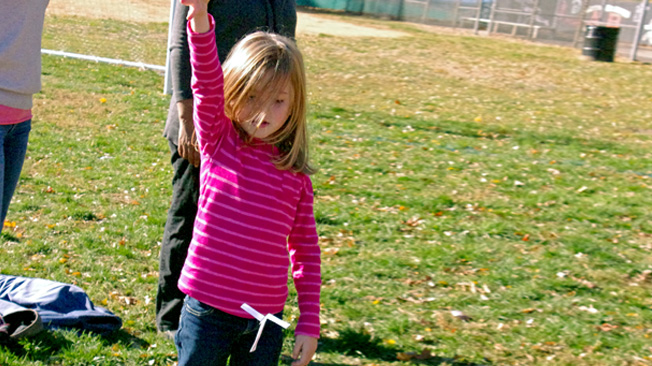
Seed Copter
(10–15 minutes)
(Science Skills: Model and test seeds that float and twirl in the air)
Point to a tree and ask: How do you think it got there? How could it spread its seeds far away? Exploding seed pods (as in the Seed Blaster activity) are only one method out of many. Have the families to act out these seed dispersal methods. (Adults may be hesitant to do some of these. That’s okay.)
Float in the wind (families pretend to float).
Roll on the ground (families roll five times).
Get carried away by water (families do three somersaults).
Stick to an animal’s fur (families hug themselves).
Get eaten by an animal. Animals drop and "plant" the seeds when they poop (families fall to the ground over and over again).
Demonstrate the Seed Copter. Ask families to twirl like the Copter, with arms outstretched. Ask: How does the wind feel on your arms? Does anyone know a seed that twirls like that?
Optional: Show the group the two-winged seed, if you have one. Drop it to the ground so they can see how it twirls. Open the seed pod to reveal the seeds inside.
Pass out the "Seed Copter" handout and review directions with families. Point out the maple seed drawing, which is what the Copter models.
Pass out scissors and paper clips. Ask adults and older siblings to make their own Seed Copters and to help younger children make theirs, using the instructions on the handout.
Circulate to support and encourage families.
Hold a Seed Copter contest (see handout). Families can try to beat their own records or play against each other.
If you have extra time: Challenge families to experiment with and improve the design—the proportions, the weight, the tilt of the wings, and so on.
Wrap-up 5–10 minutes
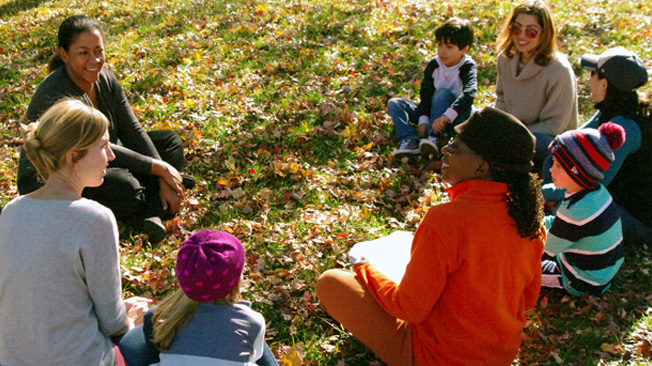
(Science Skills: Communicate why plants spread their seeds; measure distances seed need to travel to find soil; discuss a problem: cities with a lot of pavement provide fewer places for seeds to sprout and grow)
Gather around a plant near pavement (if possible) and ask what kids thought of the toys. Ask: How far would these plants need to fling their seeds to find open soil? How far to find soil with sunlight and room to grow? What if the seeds hit pavement or a very shaded or crowded area?
Measure: Ask families to pick a path the plant’s seeds could go to get to soil and measure the distance, walking heel-to-toe. Would their Seed Blaster or Seed Copter cover that distance?
Discuss: Why do plants fling their seeds so far? (Spreading lots of seeds, far away, means more of the seeds will land in good places to sprout and grow. If seeds land right next to the parent plant, they might not have enough space, light, nutrients or water to grow because the parent plant needs those resources too.)
Discuss the problem: How do city structures (sidewalks, streets, buildings) affect a seed’s chances of growing? (The city has fewer places with open soil for seeds to sprout and grow than the country. It can also have more shade because of buildings and other large objects.)
Encourage families to take home the "Seed Blaster" handout and give them extra copies of the "Seed Copter" handout to repeat the activities in their neighborhoods. Point out the "Explore Some More" activities as well. If you like, give families the "Explore Plants Around You" handout to provide them with more ideas on how to continue investigating plants together.
Explore Some More
Seed Racer
Play this PLUM LANDING game, in which Plum explains how plants spread their seeds to new places using wind, water, and animals. Plum then challenges kids to collect a variety of seeds over a series of timed missions. Encourage kids to look for the fun facts that pop up as they play the game. Have them pay attention to how shape and other features affect how seeds travel.

